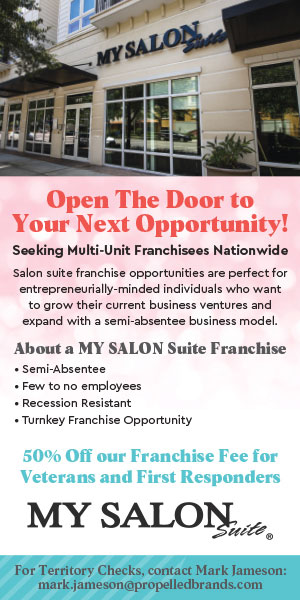Use Location Analytics Grow Your System Sales
Do your franchisees use location analytics? Do they know what it is, and how it can boost their average unit volume and help the system grow? Do you?
Wouldn't it be great to know where and when consumers bypass your brand's stores or restaurants to visit a competitor, or how often consumers bypass \ their competitors' locations to visit their stores? Think about how much it would help to also know the why behind that behavior. In 2014, you and your franchisees can gain this new knowledge about your brand's customers to gain a competitive edge.
Three converging trends enable you - and your franchisees - to better understand your current customers, and even to connect with non-customers you want to attract. First, a huge and ever-growing number of consumers carry smartphones with built-in global positioning systems (GPS). Second, many of them are willing to share their GPS data in exchange for a reward from retail or restaurant operators. Third is the emergence of the new marketing science of location analytics.
Location analytics means capturing massive amounts of GPS data from consumers who have opted to share this information, and processing that "big data" over time. This allows executives to understand which stores or restaurants people go to, which ones they drive past, how often they visit specific brands, and how much time they spend in each location. With this new business intelligence, you can make adjustments in marketing and operations to capture more customer visits for your brand.
You might wonder why consumers would voluntarily share their GPS data. The answer is simple: they get free stuff! Here's how it works. Shortly after visiting a store or restaurant that is being researched, customers receive a very short survey delivered to their smartphone asking why they chose to visit that location and what kind of experience they had.
In exchange for answering the survey, the customer gets a reward. It might be a free item or discount on their return visit, or points toward a gift card. And by providing survey respondents with a bounceback offer, mobile surveys can even drive incremental traffic and sales.
The big picture is that location analytics helps you understand customers' actual shopping and dining behavior, and the mobile surveys tell you why. This is advanced business intelligence that has not been available before. Though I do not have permission to name them here, several dozen franchise organizations are early adopters of this new research approach. I hope to provide a named case study in the future. (Check the SMG website for the latest information.)
Before 2013, market researchers had to ask people to remember where they shopped and dined, and how often. Executives had to rely on consumer-reported information to estimate their brand's percentage of visits or share of wallet. In contrast, the GPS data from consumer smartphones represents actual consumer behavior collected in real time, which is far more accurate and reliable.
For example, restaurant and convenience store companies can know their actual share of customer visits and compare that with specific, named competitors. They can see how this share changes as new marketing initiatives are tested. Retailers get an additional advantage: they can know what percentage of their shoppers didn't buy all they intended, why not, and if those non-purchasers went to a competitor or online to make that purchase. That's another reason the use of location analytics and GPS-triggered mobile surveys is taking off.
In 2014, companies can get very specific data showing how many of their brand's customers are shared with specific competitors. Executives can understand their actual visit share, and gain insight into why they have that frequency of visit versus rivals. For example, you can ask customers about their trip motivation, "Why did you choose to visit
A "previous positive experience" is one of the most telling responses to the question about the reason for visiting a multi-unit company. This means executives can also see how their locations perform against their rivals on customer satisfaction. Although most franchisors have a customer experience measurement program in place, visibility into the customer experience offered by named competitors provides an edge in separating your brand from the competition. External benchmarks like these are crucial because success in the market depends on your performance relative to your competitors.
Location analytics shows you clearly how much business is out there for the taking and helps you determine how to win customer visits from your rivals.
SMG Vice President Jack Mackey helps multi-unit operators improve customer loyalty and drive growth. Contact him at 816-448-4556 or jmackey@smg.com.
Share this Feature
Recommended Reading:
Comments:
comments powered by Disqus| ADVERTISE | SPONSORED CONTENT |
FRANCHISE TOPICS
- Multi-Unit Franchising
- Get Started in Franchising
- Growth
- Operations
- Open New Units
- Leadership
- Marketing
- Technology
- Legal
- Awards
- Rankings
- Trends
- Featured Franchise Stories
| ADVERTISE | SPONSORED CONTENT |






 The franchise listed above are not related to or endorsed by Franchise Update or Franchise Update Media Group. We are not engaged in, supporting, or endorsing any specific franchise, business opportunity, company or individual. No statement in this site is to be construed as a recommendation. We encourage prospective franchise buyers to perform extensive due diligence when considering a franchise opportunity.
The franchise listed above are not related to or endorsed by Franchise Update or Franchise Update Media Group. We are not engaged in, supporting, or endorsing any specific franchise, business opportunity, company or individual. No statement in this site is to be construed as a recommendation. We encourage prospective franchise buyers to perform extensive due diligence when considering a franchise opportunity.